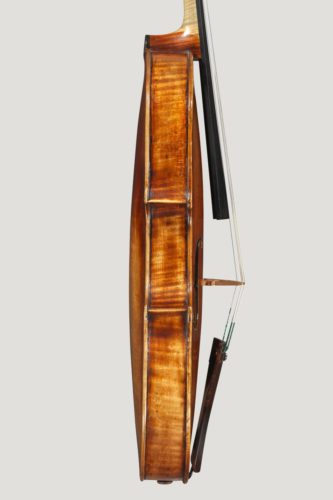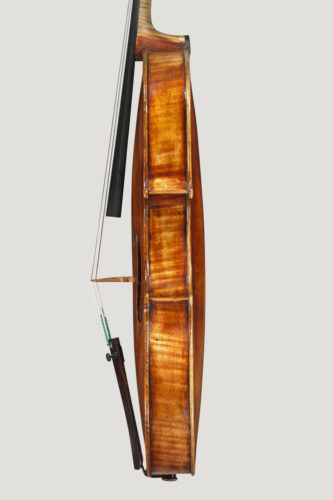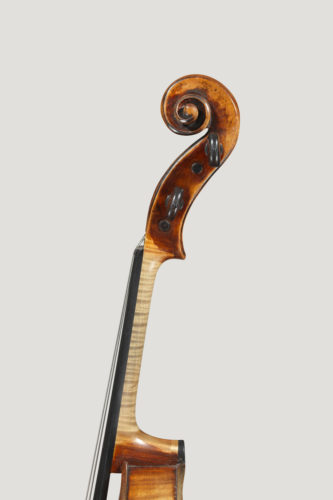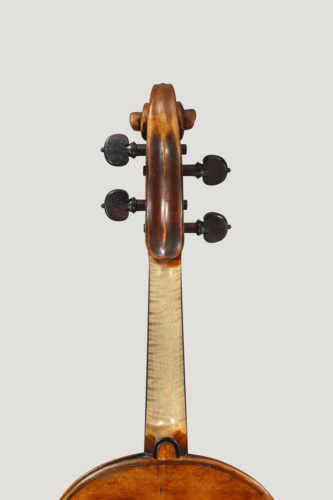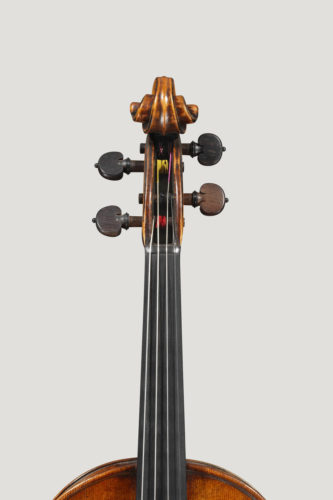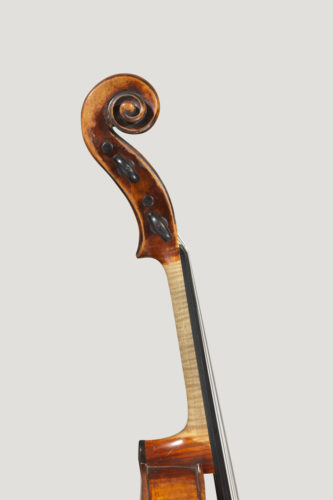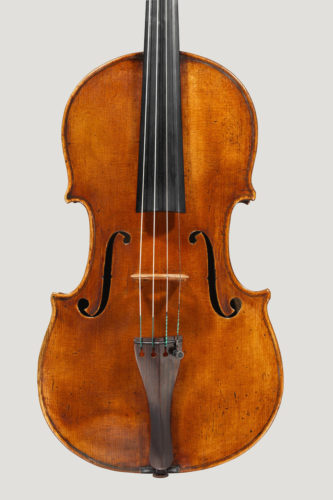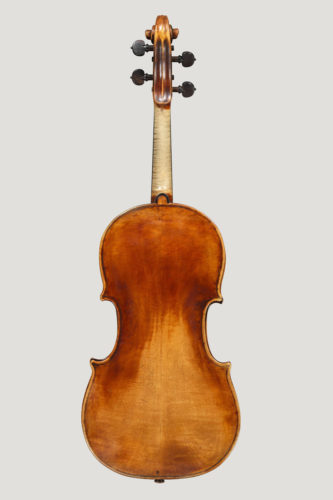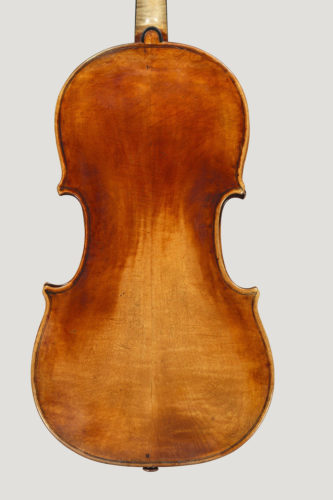Giovanni Battista Guadagnini
Viola made by G.B. Guadagnini in 1781 in Torino. Henninge Båtnes Landaas plays on this instrument.
The last years of Guadagnini’s life were spent in Turin, where he experienced a resurgence of energy after a difficult period in Parma between 1759 and 1771. (Text continued below the photos).
Although 60 years old by this time, he had the help of his sons Giuseppe and Gaetano, and the patronage and encouragement of Count Cozio di Salabue. In 1775 Cozio acquired the tools and patterns from Stradivari’s workshop, and urged Guadagnini towards a more Stradivarian style of work. The results were mixed. Guadaginini was obviously strongly attached to his own highly individual style, but since this had become rather extreme during the period in Parma, the tempering with Stradivarian ideas was generally a benefit.
Guadagnini turned his attention towards the viola in this late period, and produced a series of smaller-sized concert instruments. They are broad and very strongly arched, with an almost stripped-down practicality about them which makes them ideal instruments for players. When he died in 1786, Guadagnini left behind some masterpieces of violinmaking, as well as a great number of highly effective concert instruments whose appeal is more in their tonal power than in their aesthetic charm. Into this category fit many of the violins, violas and cellos that he made in Turin.
This 1781 viola is typical of these last years. The wood is rather plain; a two-piece back of lightly figured maple is married to a good spruce top, also of two pieces. The outline is compact, and ideal for the viola – it is trimmed back in length and width, but the breast, where much of the full-bodied tone is generated, remains full, broad and strong. This makes it very comfortable to the player, but with little penalty paid in terms of sound. The arching springs full from the edges, providing a large internal volume and a resonant springboard for the sound. The soundholes are proportionally very long for the body and set well to the edge, providing a strong platform of wood beneath the bridge.
Stradivari’s influence is evident in the wide and deeply-fluted lower wings and the circular finial holes; in Guadagnini’s earlier work, the wings are normally left flat, and the finials cut to a strong oval shape. The upper wings are broad and rather short, and the upper half of the “f” has a slightly constricted appearance.
The scroll is typical of Guadagnini’s late period. The tightly wound spiral is emphasised by a very heavy chamfer, stained black in the style of Stradivari. The last turn into the eye is very constricted, ending in a single gouge cut.
The varnish is in a very pure state, rubbed and worn where the arching of the back is in contact with the player’s shoulder, but otherwise remarkably complete. It is probably a slightly harder formulation than Guadagnini used in earlier years, but it retains a great depth of colour, backed by a rich golden ground.
The viola is referred to as the “Villa”, after its earliest recorded owner, Maurizio Villa of Turin, in whose possession it was in 1888. It was sold by W.E. Hill & Sons in 1930, who provided a full certificate. Prior to its purchase in 2006 by Dextra Musica, it was the concert instrument of the New York musician Bernard Zaslav.
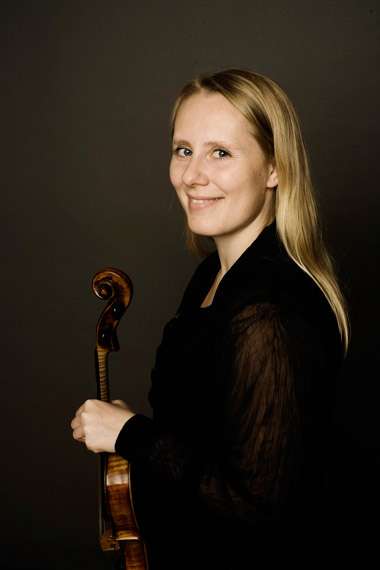
Henninge Båtnes Landaas
Henninge Båtnes Landaas is a member of the Vertavo String Quartet with which she has toured the world. Since 2009 she has held the position of co/principal viola in the Oslo Philharmonic Orchestra.
